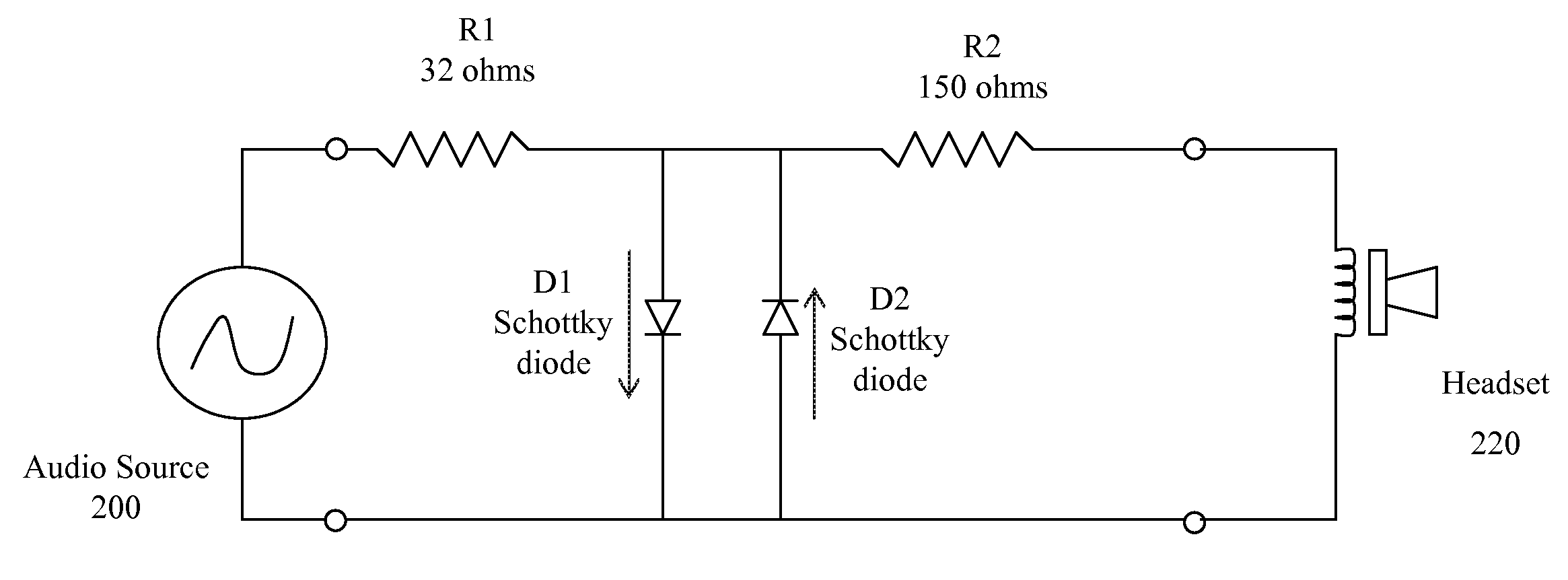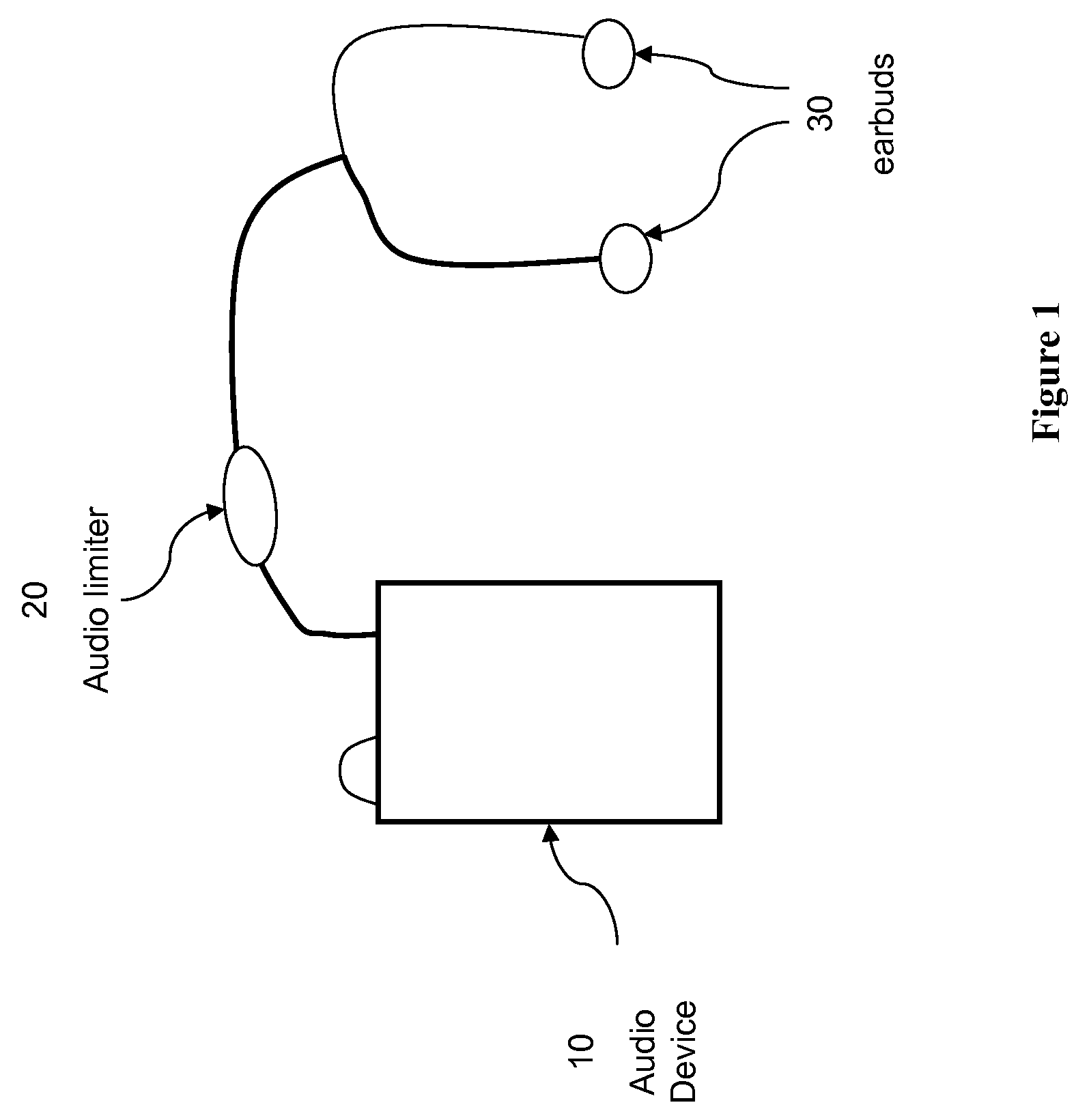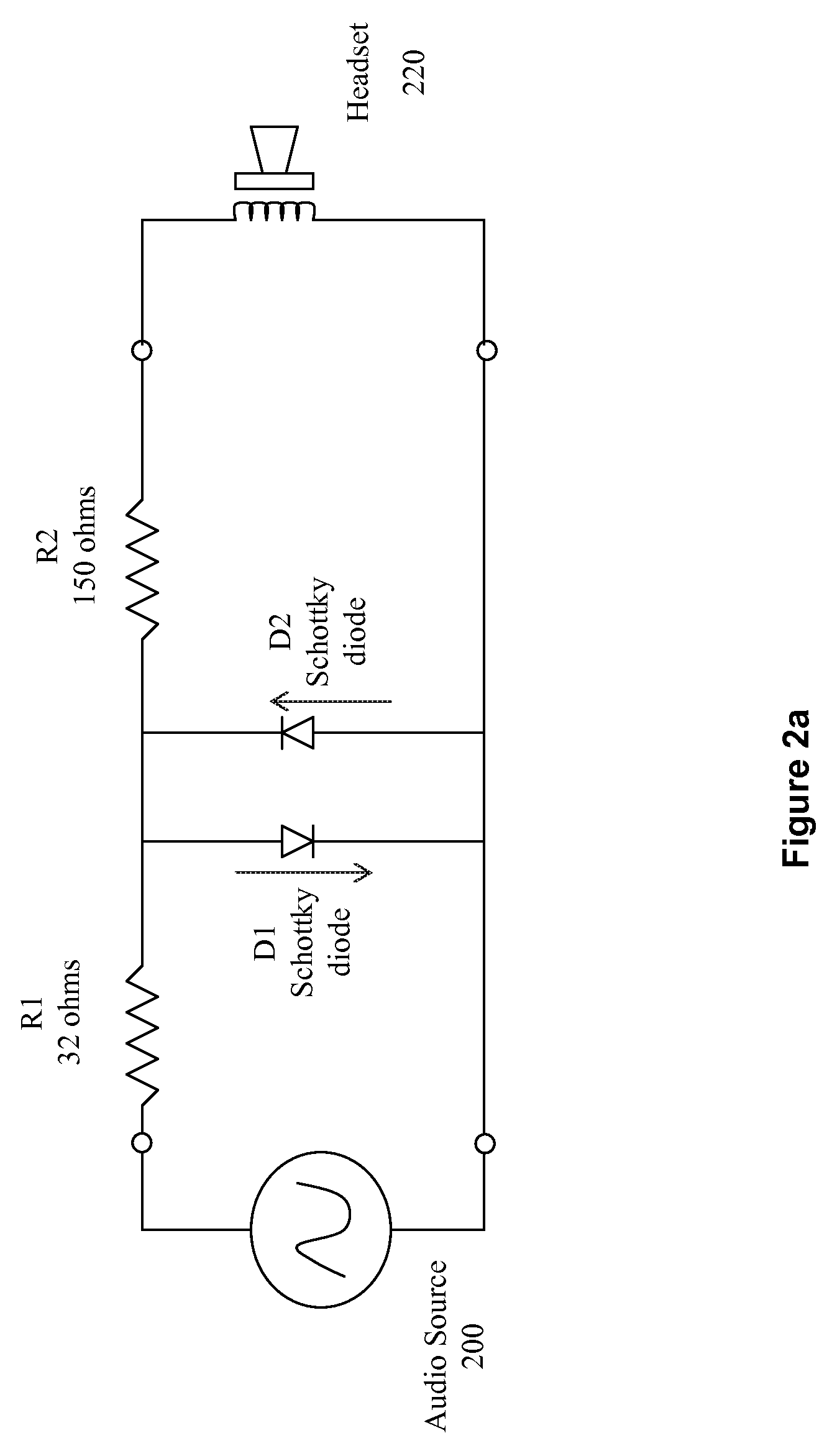Audio limiting device for headphones
a technology of limiting device and headphones, which is applied in the direction of stereophonic circuit arrangements, electrical transducers, transducer details, etc., can solve the problems of increasing the volume to unacceptable safe hearing levels, unsafe music provided by small personal audio devices, etc., and achieves no ability to disable or increase the output volume. , the effect of lowering the audio outpu
- Summary
- Abstract
- Description
- Claims
- Application Information
AI Technical Summary
Benefits of technology
Problems solved by technology
Method used
Image
Examples
Embodiment Construction
[0053]Referring to the embodiment of FIG. 1, the audio device 10 is coupled by wire to a headphone 30 with the audio limiting device 20 integrated into the wire. The audio device 10 is intended to cover any and all electronic devices that have the ability to produce audio outputs, hereinafter termed personal audio devices and is coupled to some form of headphone such as earbuds and headsets. The audio device 10 includes any of the devices such as Apple iPod®, MP3 players, cell phones as well as other audio devices such as portable radios, Sony Walkman®, televisions, and “boom boxes.” Such audio devices 10 also include computing devices such as computers, laptops, tablets, and personal digital assistants (PDAs), all of which typically have an audio output capability. There are various entertainment systems such as those incorporating virtual reality headgear that can also benefit from the present invention and are included herein. Furthermore, headphones integrated with radio and sat...
PUM
 Login to View More
Login to View More Abstract
Description
Claims
Application Information
 Login to View More
Login to View More - R&D
- Intellectual Property
- Life Sciences
- Materials
- Tech Scout
- Unparalleled Data Quality
- Higher Quality Content
- 60% Fewer Hallucinations
Browse by: Latest US Patents, China's latest patents, Technical Efficacy Thesaurus, Application Domain, Technology Topic, Popular Technical Reports.
© 2025 PatSnap. All rights reserved.Legal|Privacy policy|Modern Slavery Act Transparency Statement|Sitemap|About US| Contact US: help@patsnap.com



